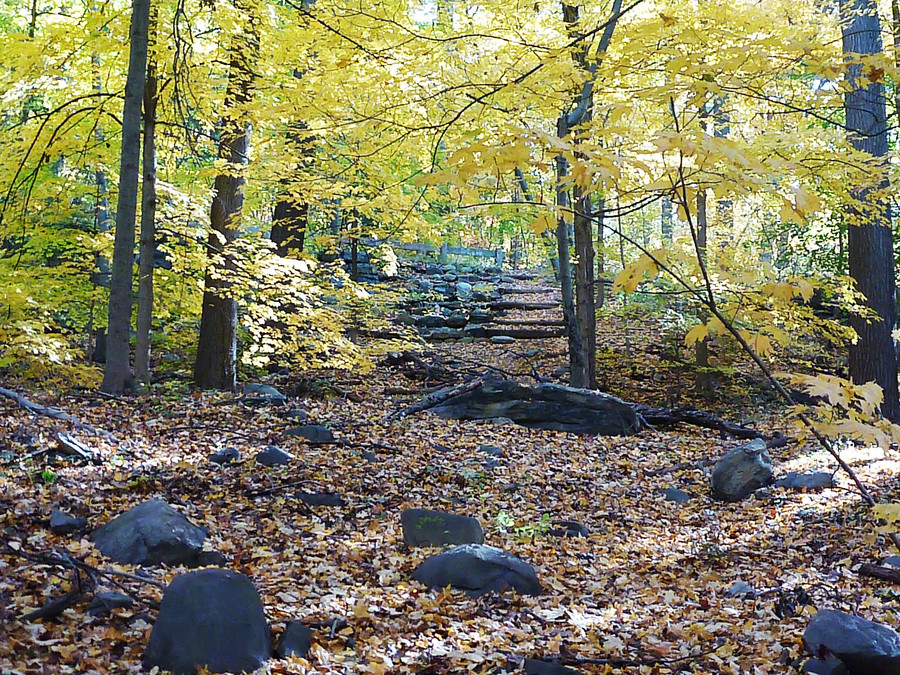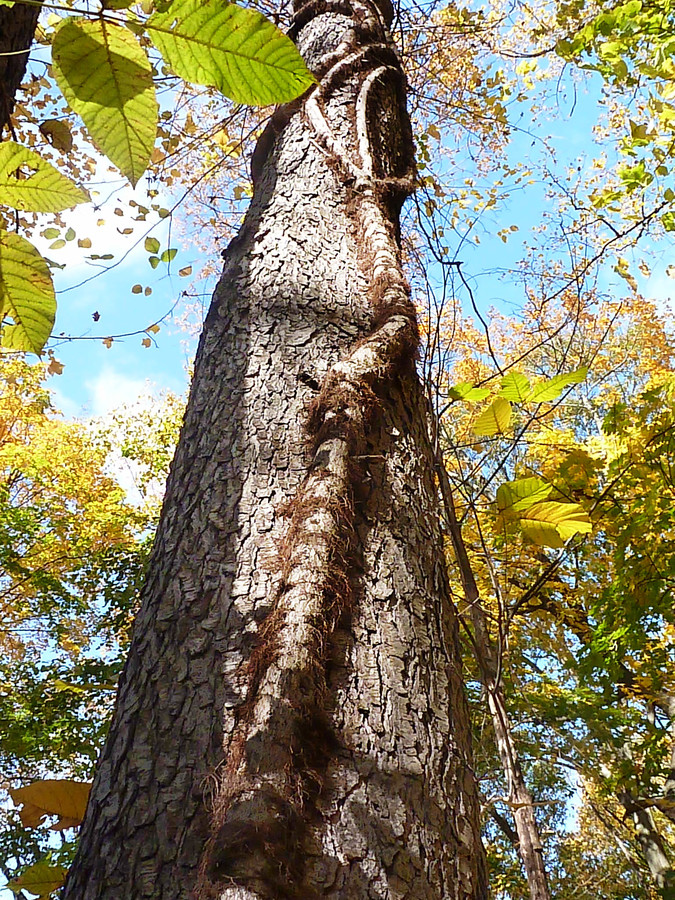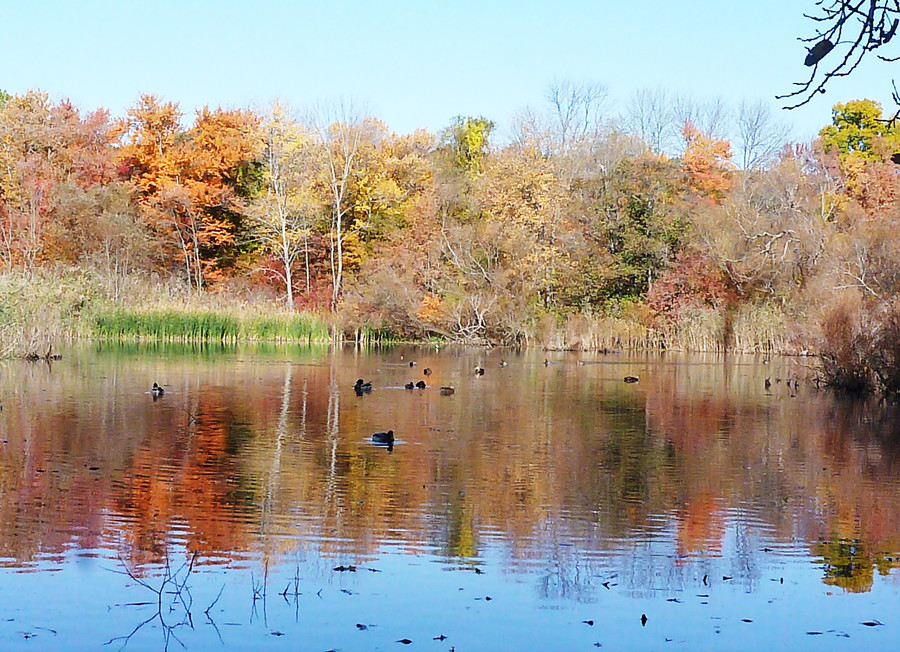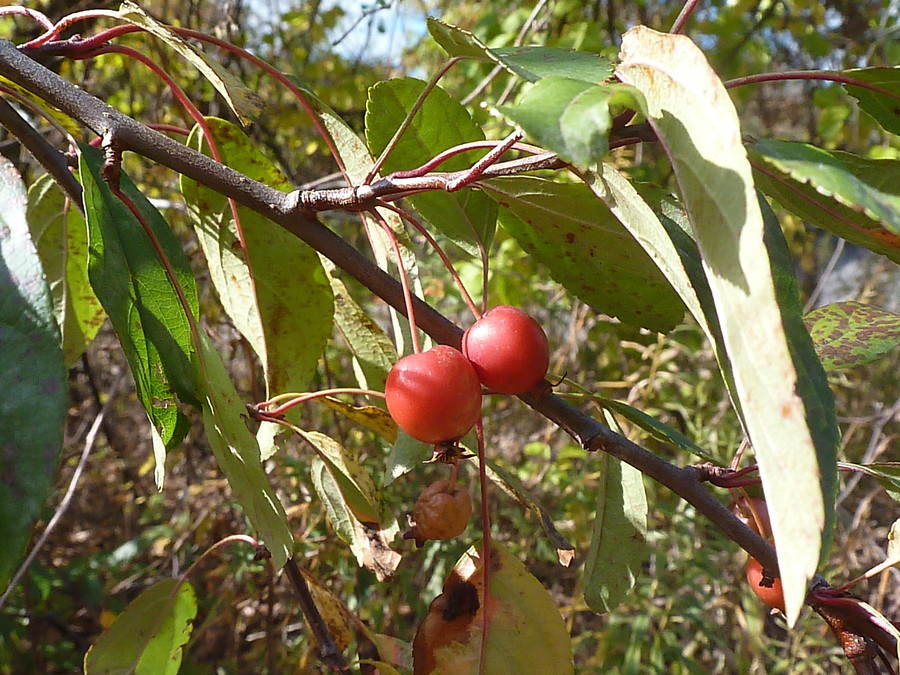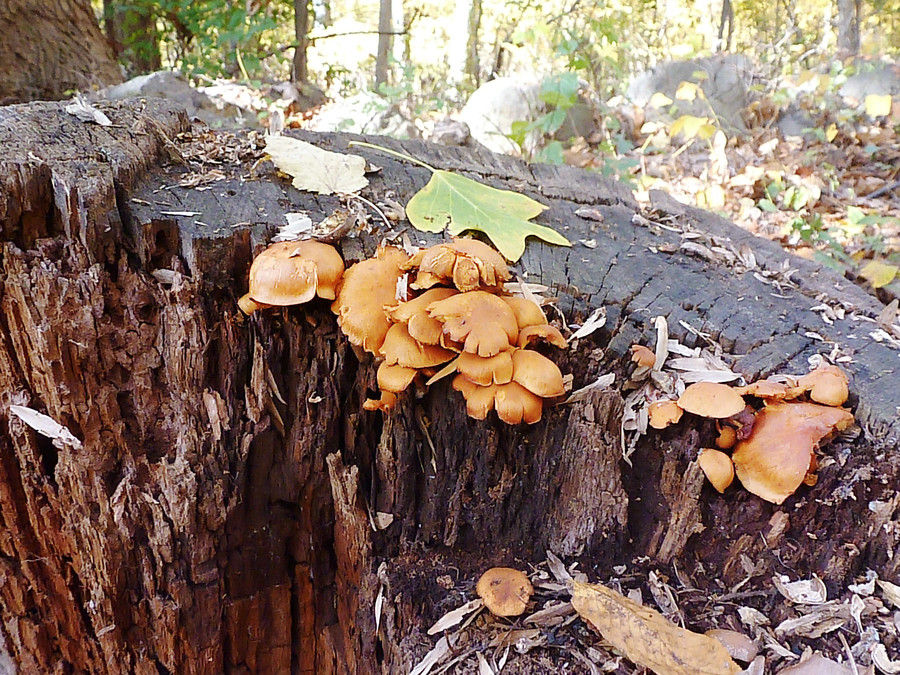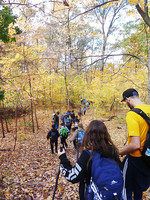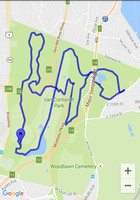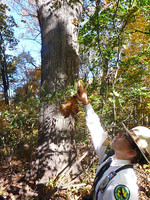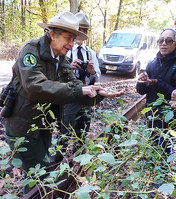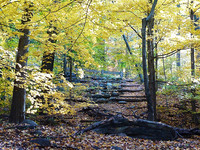Rangers unlock Vannie’s secrets along 8 miles of wooded trails
Take a hike
For the first 1.5 miles or so, the hike followed a wide trail northward along Van Cortlandt Park’s lake, amid fall foliage. And then it took a more adventurous turn.
Jessica Carrero, a park ranger who was leading the Saturday morning jaunt, stepped off the well-maintained Old Putnam Trail and onto a rugged path running eastward into the forest. There, near the northern edge of the park and the city’s border with Yonkers, she stopped to offer a few words of caution to her followers.
Park rangers lead multiple hikes in Van Cortlandt Park throughout the year. But the longest hike, covering 8 miles — and occasionally slightly more if hikers feel as energetic as they did last Saturday — takes place just once a year. It starts along the Old Putman Trail, which runs past the lake in a nearly straight line along former railroad tracks, and then proceeds to explore the less-frequented blazed trails and unmarked paths of the 1,146-acre park.
Stopping on the rugged path amid rocks and underbrush, Ms. Carrero pointed at a few vines that were snaking up — like “hairy ropes,” she said — along tree trunks.
Those were poison ivy, Ms. Carrero said — a plant that causes irritation and painful rash in many people. Van Cortlandt Park also has its share of ticks, like any forest in New York State, and some of the insects carry Lyme disease, Ms. Carrero said, although she denied having ever caught one during her multiple walks and wanderings in the park.
“If you’re doing stuff like me, walking through all the vegetation — when you get home, take a look, make sure you didn’t get any [ticks]... take a shower,” she said.
Van Cortlandt Park, the third-largest park in the city and the second-largest in the Bronx, is largely an untamed forest — home to deer and coyotes, rock outcroppings, the largest freshwater lake in the city, several wetlands and this season, a palette of fall foliage. It is also a place to find some of the more than 150-year-old remains of the Old Croton Aqueduct — a structure that has been out of commission for more than a century, although it officially closed in 1955, according to dates cited by Stacie Bartolotta, a park ranger and local-history buff.
A section of the 41-mile aqueduct ran north to south through Van Cortlandt Park. In the northern part of the park, an area known as Croton Woods, the channel’s stone structures come close to the popular Putnam Trail, a path frequented by cyclists and runners.
Turning eastward from the Putnam trail, the path of the Saturday hike began a slight ascent, leading to the old aqueduct’s wall of roughly hewn stones. Another part of the aqueduct system remains further south in Van Cortlandt Park. A stone structure towers in the forest at a place where the Old Croton Aqueduct trail intersects with the John Muir trail. It once housed a valve that allowed workers to stop the flow of water and gain access to the tunnel for clean-up or repairs.
“New York City couldn’t have grown as big as it did without the aqueduct,” Ms. Bartolotta said.
The expansion of the city forced some wildlife to retreat, but a few deer, along with many coyotes, raccoons, skunks and possums, still live in Van Cortlandt Park, and park rangers have been trying to track some of those “elusive animals,” Ms. Bartolotta said.
“We know we have [them], we just don’t see them very often,” she said.
November is the mating season, for deer, a time that makes male animals more daring and more likely to be seen by humans — as they spar with one another, Ms. Carrero said as she pointed out the place where a deer had scraped the bark off a tree with its antlers.
In another part of the park, she stooped to pick up a clump of brownish fur, one of several tufts scattered on a clearing. “Something got eaten here,” she said, rubbing the fur between her fingers: “very soft.”
The prey may have been a rabbit, attacked by a great horned owl or a coyote, she said.
Coyotes left other signs of their presence on the trail. Pointing at animal droppings laden with fur, Ms. Carrero identified it as “coyote scat.” Since the scat was “mostly fur,” it was unlikely to have been left by a dog, she said.
Wild turkeys had also been there not long ago. On a path through the forest, park ranger Adelaida Duran Ruiz stopped to inspect a patch of soil cleared of grass and leaves. Patches like this are often left by wild turkeys, which clear off debris to look for seeds, she said.
Hurricane Sandy, storms and decay have felled some of the decades-old trees in the park. Where the trees fell across hiking trails, park workers have sawn through the trunks to clear the paths. But “otherwise, [workers] leave it be and let nature take care of it,” Ms. Bartolotta said.
As the hike looped through broad swaths of the park, scenery changed from paths covered with rustling heaps of yellow and orange leaves fallen from maples, to dense gray stands of reeds rising from a wetland, to century-old oak trees. The park has a number of white oaks, which were once prized by Native American families in the area for their abundance of acorns that could be ground into flour, Ms. Carrero said.
A white oak “could provide a family with food for a year,” she said. But many of the oaks in the park are from the red oak family, which have sharper leaves and whose acorns have more tannins, making them less suitable for food, she said.
Hikers on Saturday came from all over New York City, drawn by the possibility of a wilderness hike just a subway ride away. Others, like Delia Infantes, live nearby. She expressed amazement she had not discovered Van Cortlandt Park’s trails sooner.
“I try to live in sync with the seasons,” she said, adding that after spending summer weekends on the beach, she was searching for an outdoor pastime for the fall — and hiking seemed a natural choice.
Park rangers lead hikes in Van Cortlandt Park during all seasons, rain, snow or shine.
“It’s a lot of fun to be the first person to leave your [footprints] on the snow,” Ms. Duran Ruiz said. “You go out, and there’s nobody around” — except perhaps a few squirrels and other animals, she said.



